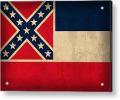Gents,
A work buddy asked me to take a look at this shotgun for him. The problem, when sighting down the barrel, is that the sight is at about the 11 O'clock to 1130 O'clock position. The bead shows no evidence of ever having been removed and repositioned. It appears the barrel has been over torqued into the action resulting in the sight being canted left (as sighted down the barrel).
My question is, would it be possible to attempt to back out the barrel just enough to align the sight? Overall, this piece is in fine shape with the blue having turned to brown. The action functions well and lock up is positive though I have not chambered a shell as of yet.
Also, this friend had one of these when he was a kid and says he shot modern shot shells through it. In my reading, I believe this to be a Damascus barrel designed for black powder though the RST Falcon Lites appear to be a safe and suitable modern alternative. I'm reluctant to tell him he may shoot standard modern low base shells.
T'd appreciate any and all thoughts and advice.
TIA,
VG



 Reply With Quote
Reply With Quote

